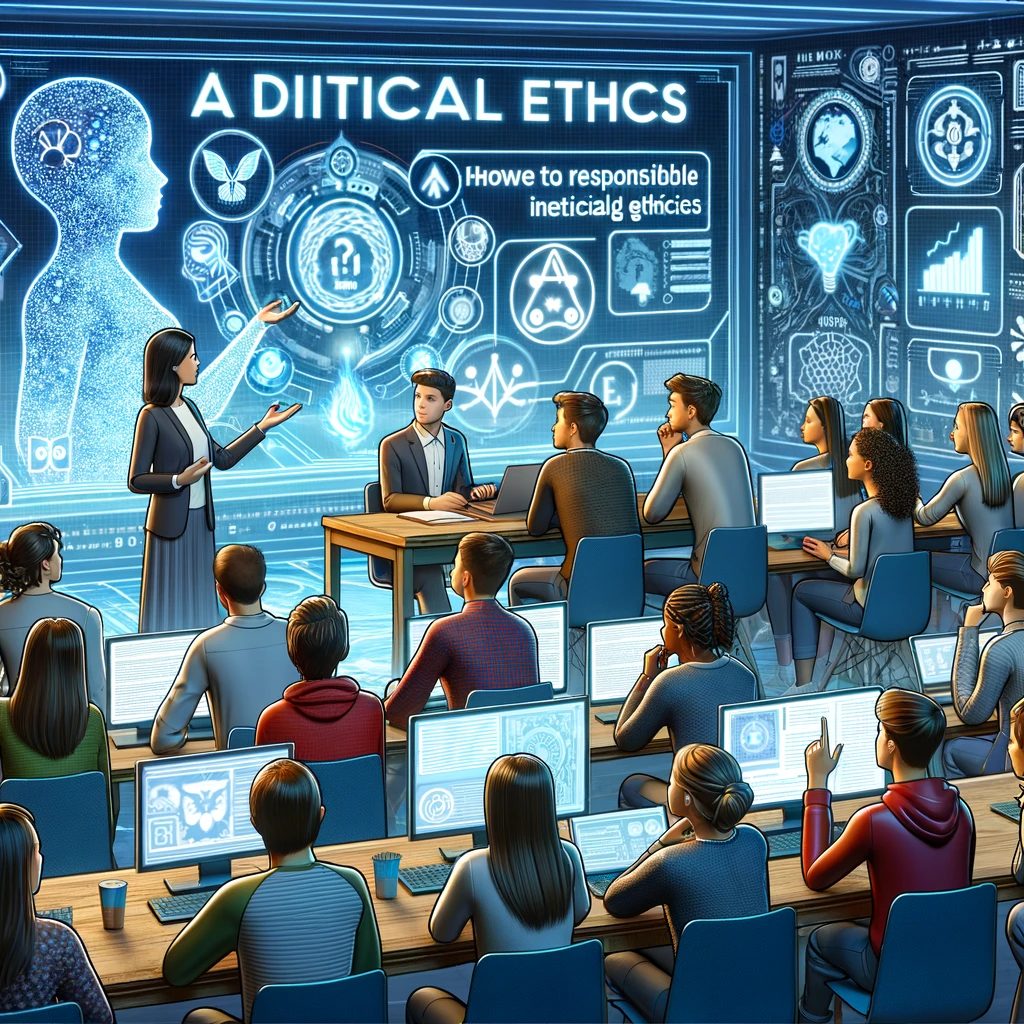
A classroom scene where students and a teacher engage in a deep dive into the ethical implications of AI-generated content, fostering a culture of responsibility and awareness.

A classroom scene where students and a teacher engage in a deep dive into the ethical implications of AI-generated content, fostering a culture of responsibility and awareness.
In the digital age, the boundary between reality and artificial intelligence is increasingly blurred, posing unprecedented ethical dilemmas. A recent incident at Beverly Vista Middle School in Beverly Hills, where students reportedly created and shared nude AI-generated images of peers, underscores the urgent need for a dialogue on the responsible use of AI technology. This event, as reported by CBS News, not only highlights the potential for harm inherent in AI’s misuse but also serves as a stark reminder of the ethical minefield we navigate as these technologies become more integrated into our daily lives.
At the heart of this controversy is the creation and dissemination of AI-generated images that manipulated the identities of students into compromising visuals. This act of digital violation, while not isolated in today’s tech-savvy world, brings to light the darker capabilities of generative AI technologies. The school’s proactive stance, involving the Beverly Hills Police Department and outlining severe disciplinary measures, reflects the gravity of such misuse and the need for a community-wide response to safeguard ethical standards in the digital sphere.
This incident echoes the concerns raised in my previous blog post, “The Shadow Side of AI Art: Navigating the Ethical Minefield in the Wake of the X-Taylor Swift Scandal” where the misuse of generative AI to create explicit content of celebrities like Taylor Swift on social media platforms was scrutinized. Both situations reveal the ease with which AI can be exploited to harm and deceive, challenging existing social media policies and highlighting the lag in legal frameworks to address such abuses effectively.
The proliferation of AI-generated content, whether in the form of deepfake pornography or manipulated images, demands a critical examination of our ethical stance towards generative AI. Establishing ethical guidelines or frameworks for AI use, especially in sensitive contexts, becomes imperative. These frameworks should prioritize accountability, transparency, and respect for individual autonomy, ensuring that AI’s deployment serves the public good while mitigating potential harm.
As we stand at the crossroads of technological innovation and ethical responsibility, the path forward requires a collective effort. Technologists, ethicists, policymakers, and educators must come together to develop and enforce guidelines that govern AI’s use. Moreover, educating the younger generation about the ethical use of technology and the potential consequences of its misuse is crucial in fostering responsible digital citizenship.
The incident at Beverly Vista Middle School, while deeply troubling, offers an opportunity for introspection and action. It compels us to consider how we, as a society, can harness the immense potential of AI while ensuring its ethical and responsible use. By embedding ethical considerations at the core of AI development and application, we can navigate the challenges posed by this powerful technology, safeguarding our collective digital integrity and humanity.
